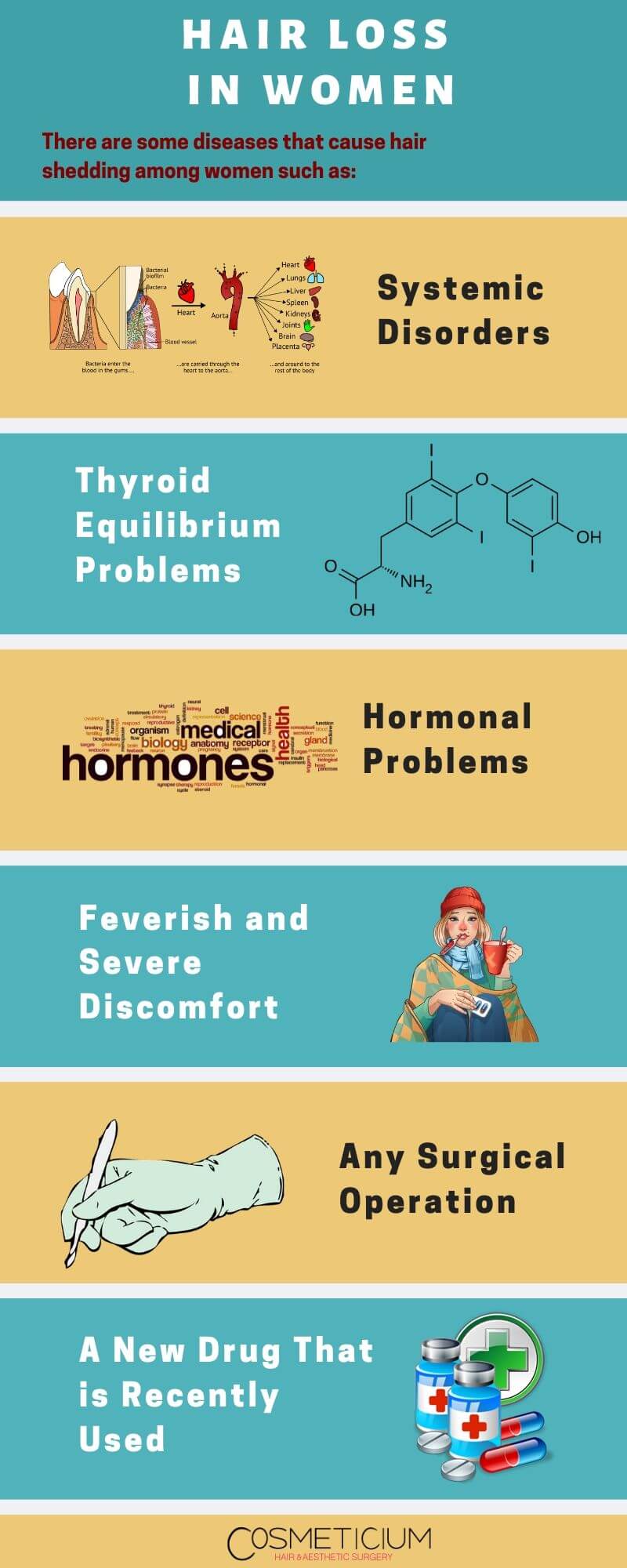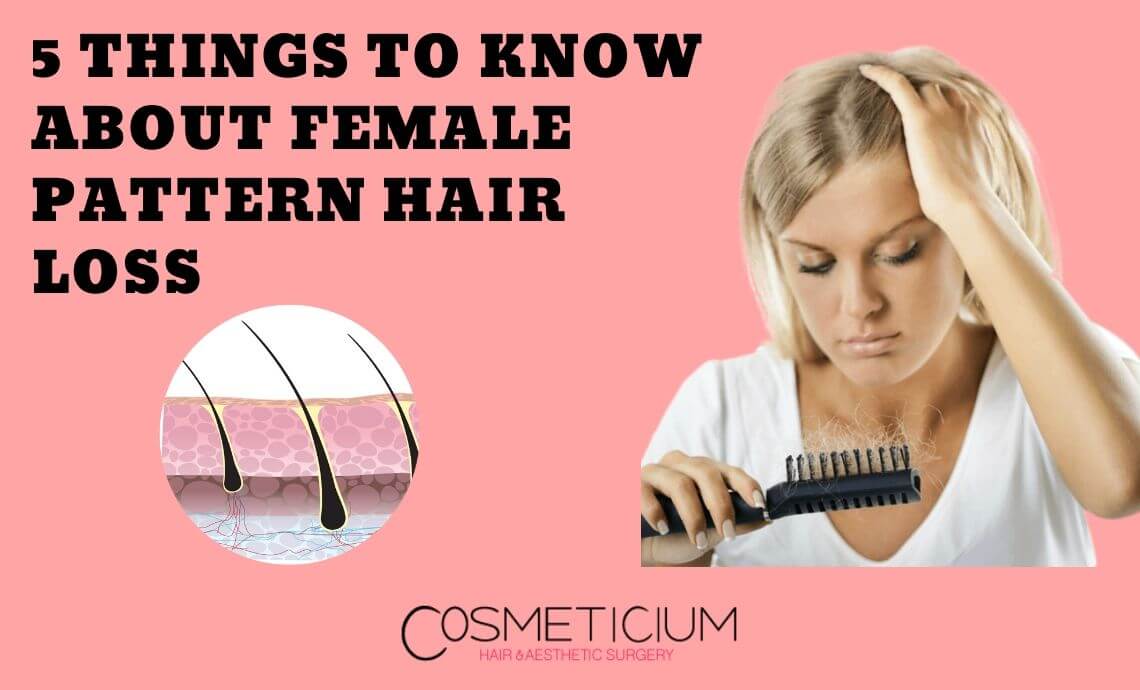When it comes to hair loss or baldness, people think that this problem is only seen in men. This is partially true. Yes, hair loss and baldness are more common in men. But this does not mean that such problems will not occur in women. The female pattern of hair loss affects almost half of women who are over the age of 50. This is not the same for every women, but it manifests itself in nearly %50 of them. In this article, we will talk about the important points you should know about this situation.
Female pattern hair loss has become a serious threat for women today. If the necessary measures are not taken on time, even women may become bald. Therefore, it should be noted that the issues mentioned here are extremely important.
When women enter menopause, different hormone changes occur. This may even cause some undesirable conditions in the female body. It is known that one of these changes or effects that occurs especially in the ones at the age of 50 and older is female type hair loss.
How is female pattern hair loss diagnosed? What are the main reasons? How is female pattern hair loss treated? All the details in our article.
Table of Contents
1. Diagnosis of Female Pattern Hair Loss
A special scale has been developed to detect and determine the degree of female baldness. Thanks to this system called Ludwig Scale, this problem in women is classified between Type I and Type III. With the scale, which has three different severity levels, the characteristics of the problem seen in women can be determined easily. After this stage, issues such as
- How hair loss will progress?
- How much hair will be affected?
- How treatment will be performed? Can be clarified.
Female pattern baldness or hair loss is different from hair loss seen in men. While this problem manifests itself in the anterior region of men’s head, it progresses in a different way in women. First of all, women’s hair growth slows down considerably. Then the hair follicles weaken and consequently a significant thinning of the hair strands occurs. This situation causes hair to break easily. It is normal for women to lose 100 strands per day. In women who experience hair loss, the number of breaks due to fractures and different causes is much higher.
Hair loss in women can be seen in every part of the head, but is particularly obvious at the peak. The rating to be done in determining this situation and its severity is extremely important. The classification made by Ludwig Scale is generally as follows:
Type I: Significant thinning of hair strands
Type II: Spreading of hair strands’ thinning and beginning of loss in some areas
Type III: Hair loss becomes apparent and externally recognized
2. Causes of Female Pattern Hair Loss
Androgenetic alopecia is the most common cause of hair loss in women. It is quite difficult to say that this is the only reason for hair loss. First, it should be known that a number of changes in the body can trigger hair loss. Psychological conditions may also be included. In this respect, other causes of hair loss in women can be listed as follows:
- Incorrect diets
- Fungal diseases
- Side effects of wrong medication use
- Alopecia areata (Ringworm disease)
- Heavy stress
- Taking high doses of vitamin A
- Systemic diseases
- Hormonal changes

3. Drug Treatment in Female Type Hair Loss
There are different treatments developed for female pattern baldness. It is important to remember that early diagnosis is very important for these to be successful or for shorter treatment periods. The most important drug therapies in the treatment of androgenetic alopecia are:
- Minoxidil
Minoxidil stands out as the only FDA approved drug in the treatment of female pattern baldness. This highly effective drug nourishes hair follicles and promotes hair growth. This drug which is used for hair growth and highly successful has 2 different formulas, 2% and 5%.
Minoxidil is a drug that can be applied directly to the scalp. Even if all of the hair does not return, a significant portion of the hair follicles that have roots on the scalp will be still brought back. It should be remembered that regular use and a period of 6 to 12 months should be waited for full results.
- Finastreid ve Dutastreid
These drugs have been developed for the treatment of hair loss in men and have been approved by the FDA. Although not approved for women, it is also recommended by some experts to women. Some studies show that these drugs also provide effective results for women. However, it is very important that you make the final decision in consultation with your doctor.
- Spirinolakton
This drug, which has diuretic properties, allows the excretion of excess fluid from the body. In addition, it blocks androgen production and can therefore promote hair growth in women.
4. May Be Genetically Induced
Research on female pattern hair loss has not been able to determine the exact cause of this disease. However, it is known that it occurs in some people totally because of the genetic factor. Therefore, it can be said that women who have baldness in their parents have a higher risk of experiencing this problem. It may also be due to the fact that hormone changes after menopause are not at normal levels.
5. Effective Struggle Through LLLT
Low-level laser therapy (LLLT) stands out as a method that provides effective results on hair loss seen in women. This method can also be applied at home. It is possible to achieve positive results when applied regularly.

